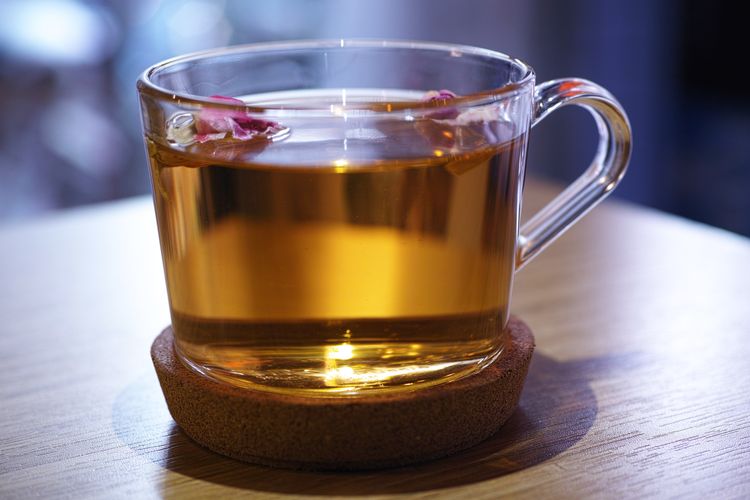When the SHTF, a lack of available dental care may necessitate alternative toothache cures. They may even come into play while things are still normal, because most people just don’t like going to the dentist. That remains the case even today although modern advances in dental care, techniques, and pain medications can take care of most tooth ailments. Maybe it is just the sound of that air drill cranking up in your ear.
For a complete guide to dental care at home, see the free download – Where There is No Dentist.

In the old days before dentists were as common as bus stops at city corners, grandmas would go into the kitchen or on the back porch to brew up some tonic to chase just about any pain away. All those herbs and spices hanging swinging by strings from the rafters where not for scaring werewolves away. In those pioneer days those dried plants were the only medicines available.
For the most part those old log cabin remedies are long gone, but some basic mixture cures can still be found among books and articles on primitive medicines. Some of them can still be used today with some effects.
Here are seven of the most basic, common home remedies for a toothache. Now, understand that relieving pain in the short term is far different from a permanent cure. These toothache pain suspenders are just more or less temporary. If you have a cracked tooth, or other serious dental issue, then I’m afraid there is a dentist in your future. But, meantime, try one of these. You never know, it just might make a permanent fix for some issues.
Guava Leaves
Believe it or not, fresh guava leaves are among the easiest of toothache cures, assuming your grocery store carries them. The plant has anti-inflammatory, antimicrobial, and analgesic properties, and has been shown to be effective as a treatment for a sore tooth.
Oil of Cloves
When I was a kid, my mom kept a small bottle of clove oil in the bathroom medicine cabinet. I remember taking the cork out just to take a whiff of the clove smell. I liked it. She used it on toothaches and as I recall it did a pretty good job. She would just dab a bit on the tooth with her little finger. The pain was gone and the taste lingered. Since those days, science has proven that clove oil has painkilling, anti-inflammatory, and even antiviral properties.
Put the oil of cloves on a cotton ball or a small cotton roll like dentists use. Let it soak in, but don’t overdo it. Then place the oil soaked roll or cotton ball next to the affected tooth. Leave it there until the pain subsides. Repeat as needed.
Ginger-Cayenne Paste
Use this home remedy in small amounts, because the combination makes for a hot mixture. Form a paste with ginger and ground cayenne pepper flakes using a small amount of water. Mix until the consistency is like a glue or pudding like substance. Dab the mix with a cotton swab. Place the paste directly on the tooth, but try to keep it off the gums and cheek inside your mouth. Leave it there as long as you can stand it.

Either spice can be used by itself, so if the pepper is too hot, try the ginger by itself.
Salt Water Gargle
Practically everybody knows this remedy, but its use may have gotten lost in the sands of time. You can use common table salt or even sea salt, but add a tablespoon or so to water and heat to dissolve the salt. After it cools to a warm solution, simply gargle the salt water for 30 seconds or so. Repeat several times to ease the tooth pain.
Peppermint Tea

Various teas have long been known to provide pain relieving benefits. Peppermint tea in particular seems to work well, perhaps because people simply like the taste of it. Peppermint though has other properties to help with aches and pains as well. The tannins in tea also assist with reducing swelling. Brew the tea and swish it in the mouth to help knock the edge off the tooth pain. Some even recommend placing a wet tea bag right against the tooth. And another option is to used peppermint essential oil, diluted in water and swished as a mouthwash.
Hydrogen Peroxide
This is an easy fix among many toothache cures, but use it with some caution. Use a 3 percent solution to swish around the impacted tooth. Do not swallow the hydrogen peroxide but spit it out. Repeated applications can be used, but again, be certain not to swallow the mixture.
Ice Cubes
Ice cubes are of course frozen and the super cold tends to deaden nerves. Application can be done in various ways, chipped or cubes can be placed into a sealed plastic bag, then wrapped in a piece of cloth. This pack is applied next to the tooth. The same ice pack can be placed outside the mouth along the cheek near the affected tooth. Use until the pain is numbed.
Salt-and-Pepper Paste
Who knew that the two most common spices, when mixed together with a few drops of water to form a paste, would be among the group of old-time toothache cures?
Tincture of Myrrh
Bought on line or at specialty vitamin stores, myrrh is a natural gum or resin extracted from small trees of the Commiphora species. The resin or oil acts as an astringent which reduces inflammation. Make a mixture of the myrrh by simmering a teaspoon in two cups of water for about 30 minutes. Then use a tea strainer to separate the material from the solution. Let the solution cool. Then put one teaspoon of this solution into a half cup of water to further dilute it. Rinse in the mouth over the tooth 5-6 times a day. This should help reduce the pain and ache of the hurting tooth.
Summation: Now That You Know New Toothache Cures…
Again, everybody gets different results from these various home remedies. Continue to monitor the condition of the tooth. Finding a dentist during a SHTF or any disaster can be a problem. If the tooth gets worse, then begin a search for one. Right now, find out if one should happen to live close to where you live or near a potential bug out location.
This is even more reason to pursue regular medical care as a preventive measure. See your family doctors regularly, and a dentist at least twice a year. If you take care of business, maybe you can avoid troubles later on.
Finally, to see more homeopathic remedies and more old-school ways of getting by, check out our review of the book, “The Lost Ways.“

2 comments
Never, ever use essential oil of cloves straight; it can burn & damage gum & mouth tissue. Dilute the clove oil at a ratio of 10 drops of clove to 1 ounce of carrier oil (regular vegetable oil will do). Also, peppermint has very little in the way of tannins; combining peppermint with regular black tea will increase the tannin content.
As I remember, my grandmother used a mixture of bourbon, lemon, and honey for both pain and cough relief. It always worked when I was a kid.